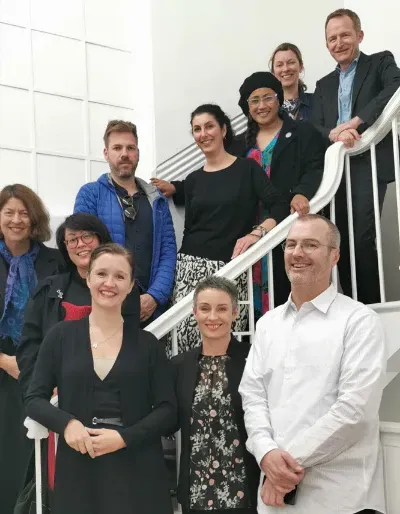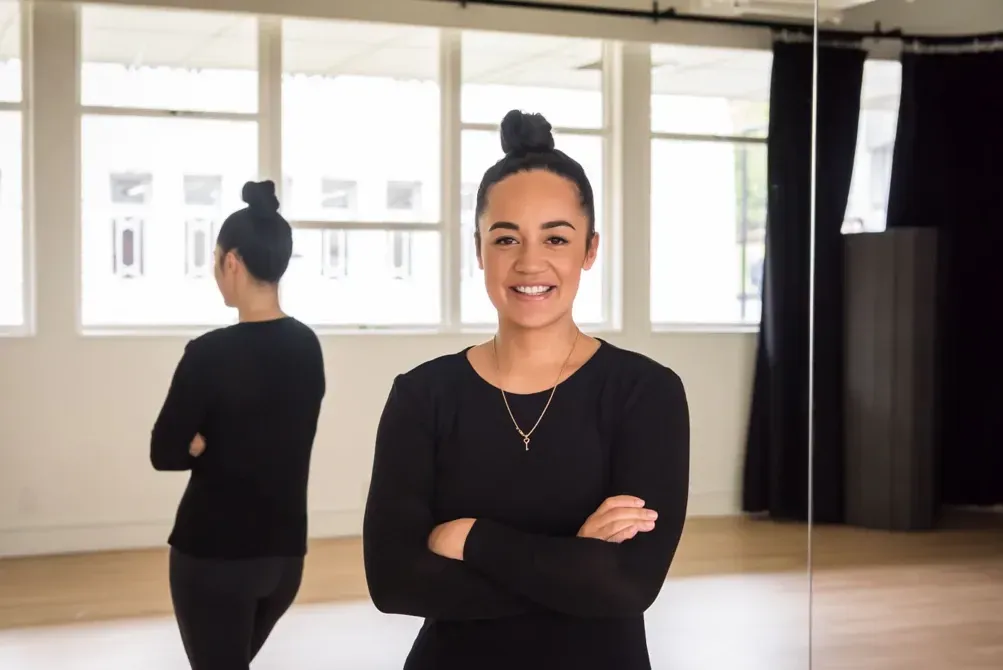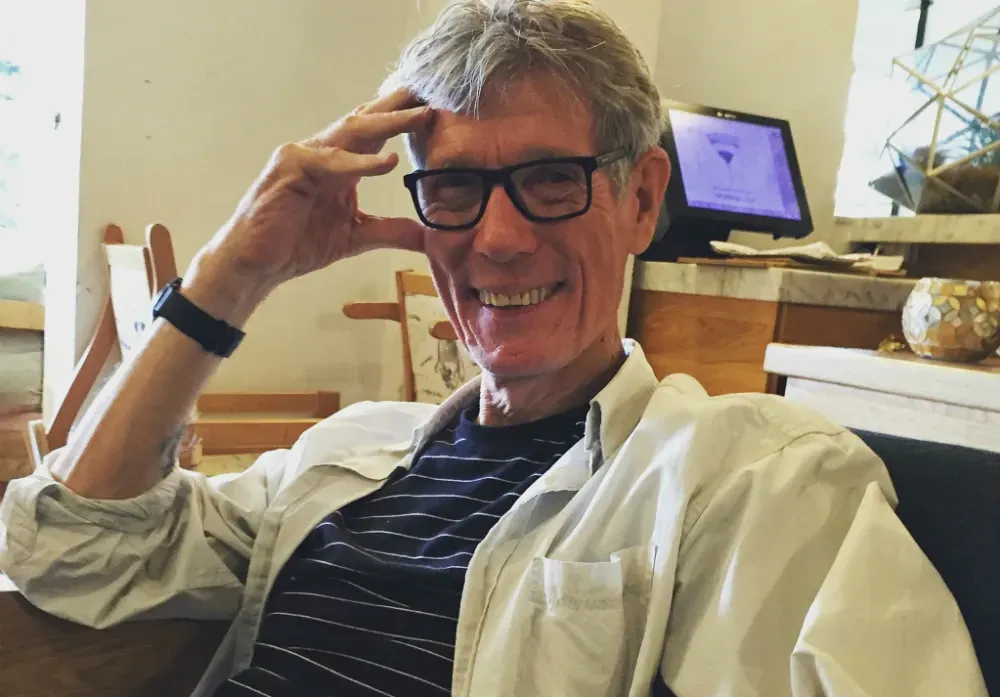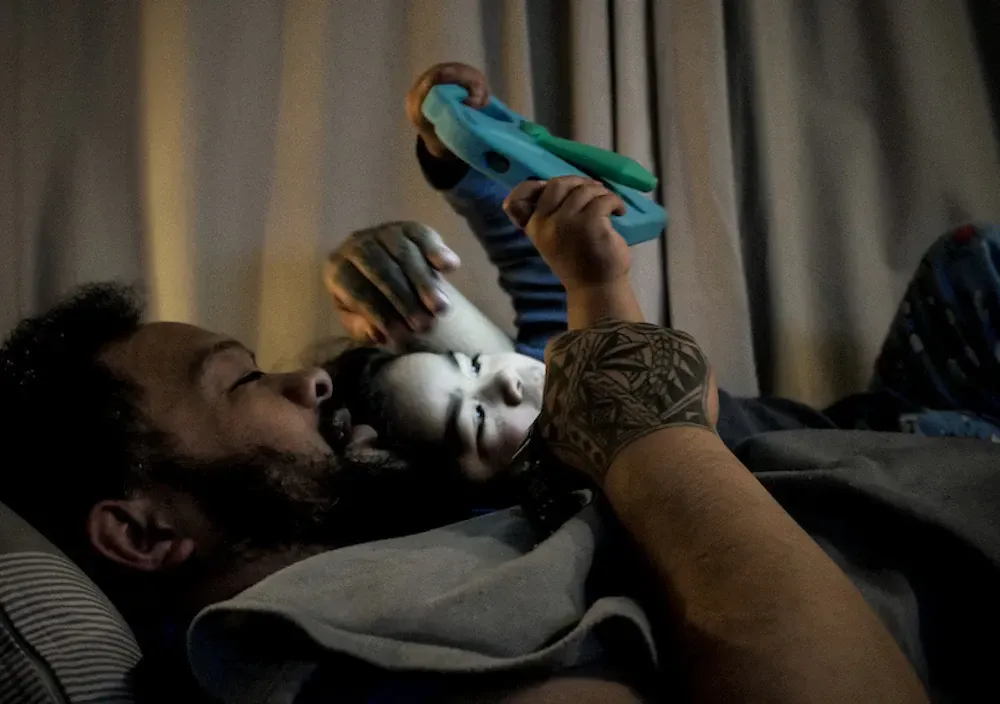Gains and Pains
Written by
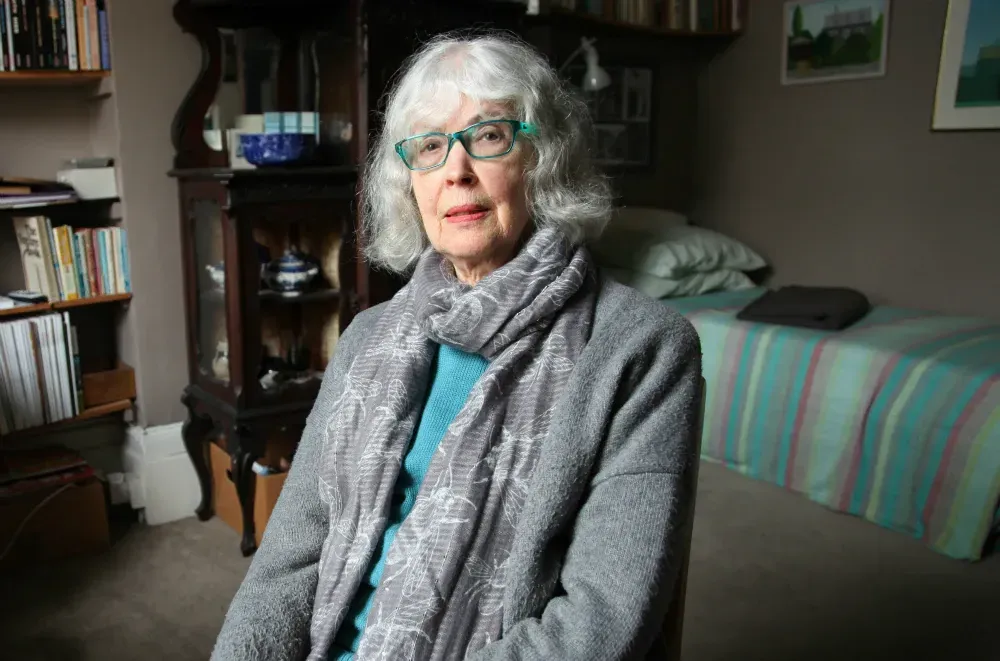
No one made them.
Light painted them. You're in charge
of the hanging committee. Put what space
you like around the ones you fix on,
and gloat. Art multiplies itself.
Art's whatever you choose to frame.
Those are the closing lines from Fleur Adcock’s 1986 poem ‘Leaving the Tate’. In this poem Adcock expresses what many hopefully feel leaving a gallery on a good day - giddy liberation in framing up whatever we wish around us.
Now 85, Adcock along with illustrator Gavin Bishop and novelist Elizabeth Knox has been honoured this week with a Prime Minister’s Award for Literary Achievement. Adcock had her 534-page Collected Poems published earlier this year by VUP. Sarah Catherall conducted this interview for The Listener earlier this year, which suggests more wonderful poems to come. And Paula Green celebrated Adcock’s work and interviewed her on NZ Poetry Shelf.
Illustrator and author Gavin Bishop, who has 70 books to his name, was interviewed by Andrea Rush here.
Exceptional Work of Artist Honoured in the USA
One of our most poetic and adventurous sculptors, the New York and Auckland based Kate Newby has won one of the treasured Painters and Sculptors Grant in the US that is facilitated by the Joan Mitchell Foundation. The grants of $25,000 are provided to 25 artists across the United States annually, selected by jury for exceptional work.The full list of present and past winners with links to their work here.
It’s easy to see why from documentation of Newby’s current solo Nothing In My Life Looks Big Enough at Cooper Cole in Toronto. Channels filled with scattered diverse stones embedded in the floor, inlaid bricks and ceramic multicolour slats of piping snaking up to the ceiling.
Pasifika Artists Recognised
Back home it’s annual Creative New Zealand Arts Pasifika Awards time with eight award recipients (full list here). A new Pacific Toa Artist Award recognises an artist with the lived experience of disability. It goes to musician and advocate Fonoti Pati Umaga. The Senior Pacific Award goes to senior actor Eteuati Ete who wrote and performed the first solo show by a Pacific Islander back in the 1980s.
Bringing Together Kaumātua and Rangatahi
A strong meaningful home has been found for this years Dance Aotearoa New Zealand (DANZ) Te Kanikani Whakamātau/Māori Dance Residency: Rotorua. The recipient is Sophie Williams who grew up in Rotorua and is Te Arawa and Ngāpuhi. Davis’s project, Iho - the heart or essence will explore movement with Kaumātua and rangatahi, to consider how an intergenerational dance collective might work in Rotorua.
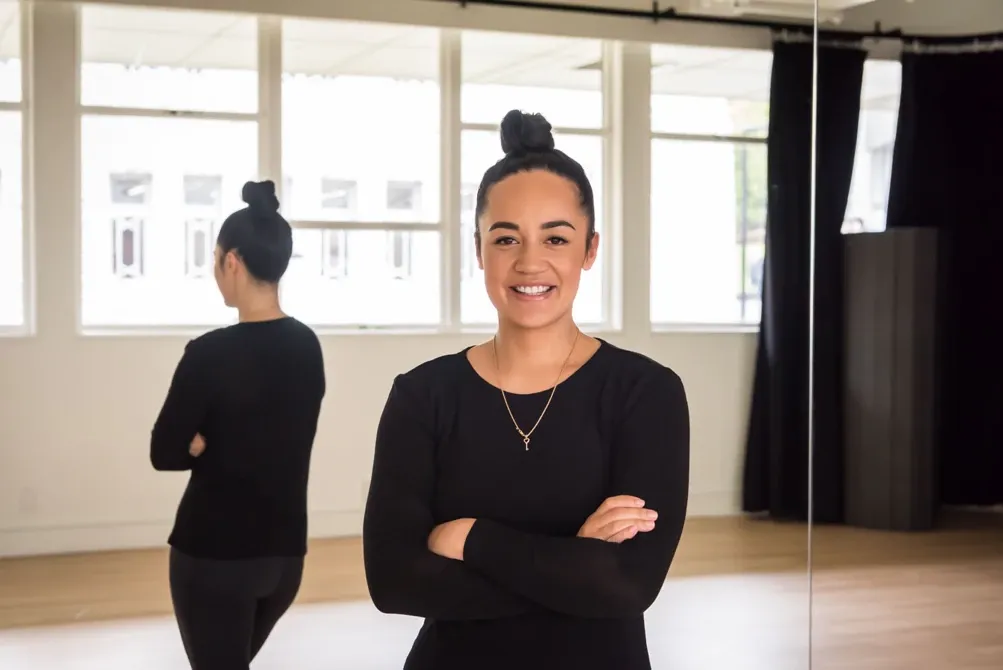
Sophie Davis, DANZ’s 2019 Māori Dance Residency recipient.
The Gains That Can Come With Losses
Next week is Auckland Artweek and we remember the organisation that founded both it and the Auckland Art Fair. The NZ Contemporary Art Trust has announced it is winding down. Established in 2004, the charitable trust set up the art fair and delivered five of them before it was sold to North Port Events in 2015. With funds in the bank the trust decided to distribute its funds to other organisations which continued its purpose “of promoting and supporting contemporary art.” Pictured with NZCAT at Michael Lett Gallery are people involved as recipients of just over $350,000 in funds: Artweek, Pantograph Punch, Auckland Art Gallery’s education outreach programme, the Kate Edgar Education Charitable Trust, Artspace’s new project Drift (a “non-academic, educational platform geared to develop high-level curatorial, cultural and artistic advancement”), a visual arts component for Auckland Writers Festival, and Auckland Art Gallery’s Thinking Dangerously discussion series.
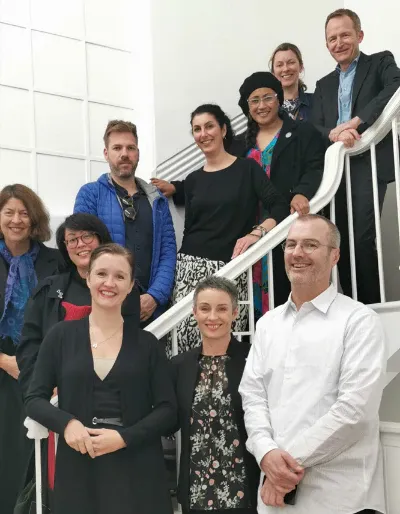
NZ Contemporary Art Trust board and recipients.
Auckland Artweek has continued under the auspices of founder Deborah White and the VA Auckland Charitable Trust. The week-long celebration of art in Auckland opens Saturday - extensive programme here.
Loss of a Strong Artist
On Monday night we lost a committed inventive photographic artist with a piercing eye and independent swagger. Harvey Benge looked to the visual poetry to be found in the complexity of cities, bringing verve and class to the street photography scene. Both Auckland and Paris based, Benge was particularly committed to the photobook as exhibition medium. His ‘bookworks’ number at least 60, the last published just this May: Nothing Eventually was made about Tokyo, over three visits.
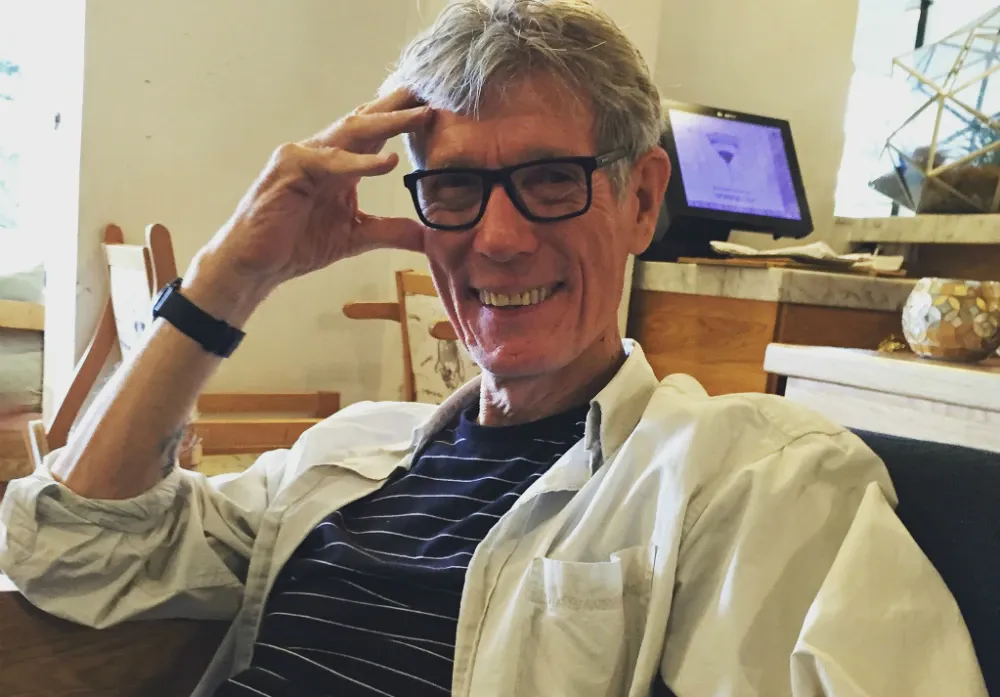
Harvey Benge, by Eve de Castro-Robinson.
Benge’s work currently features in an exhibition whose title now feels rather apt, Singing to the Dead at Northart in Northcote, a show of long-time Northart members paying homage to others. Here’s a great Photoforum photo blog of a 2018 Northart reprise of a typically adventurous Benge show, with Benge in interview with Ron Brownson. I feature an image of Harvey here shot by friend, composer Eve de Castro-Robinson. You can pay homage to Harvey 11am Friday, at Auckland’s St Matthews in the City.
Tupaia and Tuia 250
Eyes have been on Tairāwhiti Gisborne this last week with Tuia250 commemorations. The weekend saw the start of the inaugural Te Tairāwhiti Arts Festival, with an impressive programme. The Festival Facebook page is a good gateway. A bright new chapter in arts festival programming in New Zealand, Kathryn Ryan at RNZ talked to director Tama Waipara on Wednesday about coming home and his musicial influences. And as Waipara says “the festival has its own kaupapa”.
Te Ao Maori News reports on a new play Henare, a celebration of East Coast songwriter Henare Waitoa by his descendants, written by Hōhepa Waitoa and produced by Hone Kouka of Tawata Productions.
The Gisborne Herald reports on key exhibitions launched at Tairāwhiti Museum, Native Voices: Ko au, ko matau — I am, we are, is “a platform for indigenous dialogue through art” led by Uawa-Tolaga Bay artists and designers Kaaterina Kerekere and Tai Kerekere’s KE Design. And then there’s the significant Tu te Whaihanga, 37 taonga returned to the region for a year which were originally shipped to Britain 250 years ago when gifted and traded with Raiatea chief Tupaia and crew on the Endeavour.
For those that grumble about Te Papa not doing more pop-up museums: Auckland Museum have created a pop-up museum Ata Hira Museum on the Move: Voyage to Aotearoa to provide perspectives on Tupaia that is travelling to different Endeavour landing points, currently Tairāwhiti. Writer Courtney Sina Meredith and illustrator Mat Tait were commissioned to create the book The Adventures of Tupaia to go alongside the exhibition. There are pageworks and an interview on The Spinoff.
A group of Tahitians from Tupaia’s island Ra’iatea are in New Zealand as part of Tuia 250 and direct descendant Jean-Claude Tautu spoke to Pacific Breakfast. Sally Blundell in the latest Listener brings together a range of views. On Pundit Brian Easton asks why don’t we celebrate the arrival of Tupaia in New Zealand? It would seem we are starting to.
Wellington Gallery Splitsville
Following the long lead in this category from Auckland’s Gow Langsford, it seemed for a while there that double-barrelled gallery naming (and accompanying twin ownership) was the trend. No more. This year has seen an unprecedented number of gallery divorces in Wellington.
With the departure of James Blackie after 12 years, Page Blackie this month becomes Page. The logo now features the year ‘1987’, reminding us that’s how long Marcia Page has been in the business (previously as Tinakori Gallery).
On 1 October Hopkinson Mossman (previously Hopkinson Cundy) became Mossman, reflecting the change to Dane Mossman’s sole proprietorship. The change follows the gallery’s move from Auckland to Wellington in 2018.
Keeping up? Right. Last year smart young dealers Millers O’Brien opened, but have now confirmed that Jhana Millers will be carrying on as owner alone, the name change to occur at a later date.
And while we’re on this topic, hats off to longstayers Penney Moir and Jenny Nelligan who have co-owned Bowen Galleries since 2004 (Jenny since 1981) - don’t go name-changing.
And final dealer news from Wellington this month is a new home for Hamish McKay Gallery. It reopened this last weekend at 16 Jessie Street. Given all the above movement elsewhere it’s no wonder that McKay has ‘Est. 1993’ on the sign outside.
And Elsewhere
Keeping with art spaces in Wellington, as part of their Wellington Report, the Dominion Post has given space to what has been a long made call to Wellington City Council for “mid-tier, mid-size, mid-career venue if it is to thrive as the cultural capital”.
As reported in a video by the Otago Daily Times, a new waharoa (gateway) created by master carver James York for Dunedin’s Toi Tu Museum is being called a ''very significant moment'' for the museum.
Further south, woes continue in Southland over getting back their art gallery and museum. As the Southland Times reports the planned redevelopment is on hold while the Invercargill City Council looks to take over decision-making when currently all decisions on the museum's future needs the agreement of its three council funders. The building was closed 18 months ago after being judged an earthquake risk. Since then the board has recommended upgrading the current building, but incredibly the newspaper reports that none of the three councils have given feedback.
Dance and Film Forge On
The New Zealand Dance Company last week had its Canadian premiere, performing at Canada international dance festival Fall for Dance North in Toronto (good review here). They are performing at The National Arts Centre in Ottawa as I write, as the last step on this tour.
Female representation in the arts was our big topic last Lowdown, but we didn’t even get on to that old chestnut, film. Stuff this week notes that female Kiwi filmmakers and performers won six out of seven prizes at the Show Me Shorts short film festival. There were 2000 entries with 63 films selected for inclusion in a programme now screening nationwide. Nearly half of the submissions were directed by women, which festival director Gina Dellabarca said was a sign the industry was "moving in the right direction". Gina was recently asked for some insights by The Big Idea.
“The terrorist narrative” created by those leading the investigation into Operation 8, the Urewera Raids was, writes artist Terri Te Tau for Christchurch Art Gallery’s Bulletin, “far removed from my personal experiences of the people who were implicated and for me it raised questions around what we assume to be empirical evidence derived from surveillance data, and how susceptible it is to cultural bias and prejudice.”
Te Tau should know. As she writes, her whanau were raided. Her work set in a black surveillance van parked within the gallery space Te Āhua o te Hau ki Te Papaioea is currently part of Māori Moving Image: An Open Archive. Inside the van on the windows you can watch video as if driving past the four houses raided in Palmerston North.
The Maori Moving Image exhibition was recently reviewed by Matariki Williams for international Frieze magazine. Reviews of New Zealand based shows in Frieze are few and far between. Last year Williams covered Oceania in London, and a few years ago Anthony Byrt turned in the occasional coverage (Byrt’s recent piece on Simon Denny for Artforum has just come out from behind their paywall).
This week I was impressed on a visit to the Tauranga Art Gallery by the way the programming reflected in fresh ways local engagement and contemporary art. Tauranga painter Kelcy Taratoa is the subject of a survey exhibition about to open there, while daughter Arpege Taratoa has co-curated a show in another part of the building commemorating the Battle of Gate Pa. Both spoke to RNZ’s Lynn Freeman.
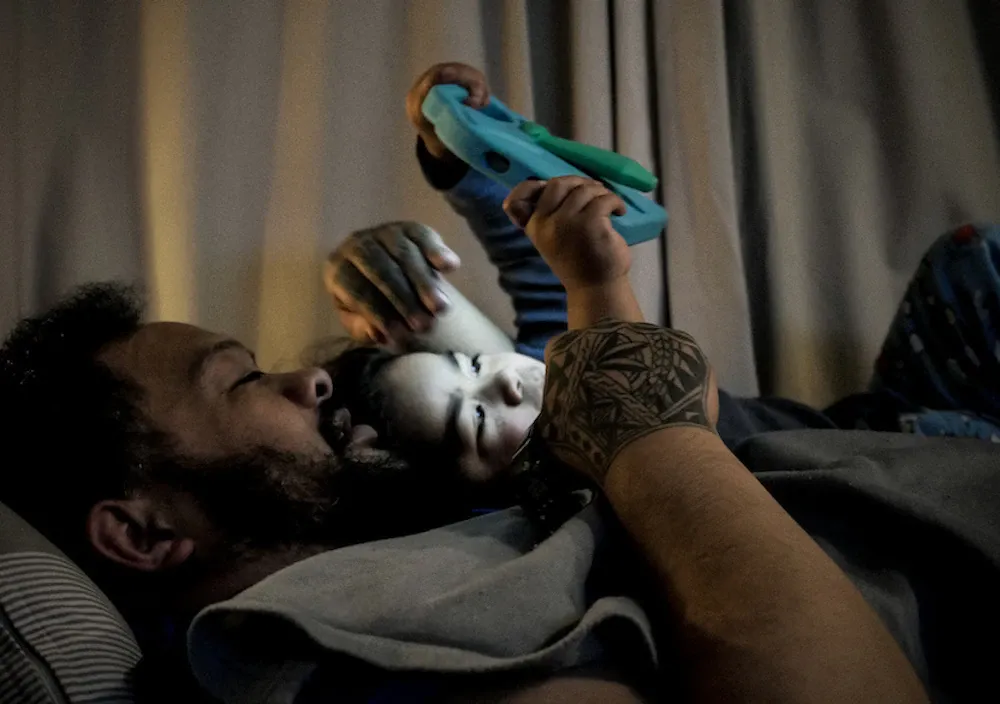
Kaisolaite Uhila pictured in Dunedin by Robert George.
Tongan New Zealand performance artist Kaisolaite Uhila is currently in residence at the Dunedin Public Art Gallery. His project is part drumming performance, part sculpture, banging cabin bread tins into new shapes daily. For The Spinoff Art, Robert George and Justin Spiers contributed to a photo essay I helped put together, with a talk to Uhila about his work.
